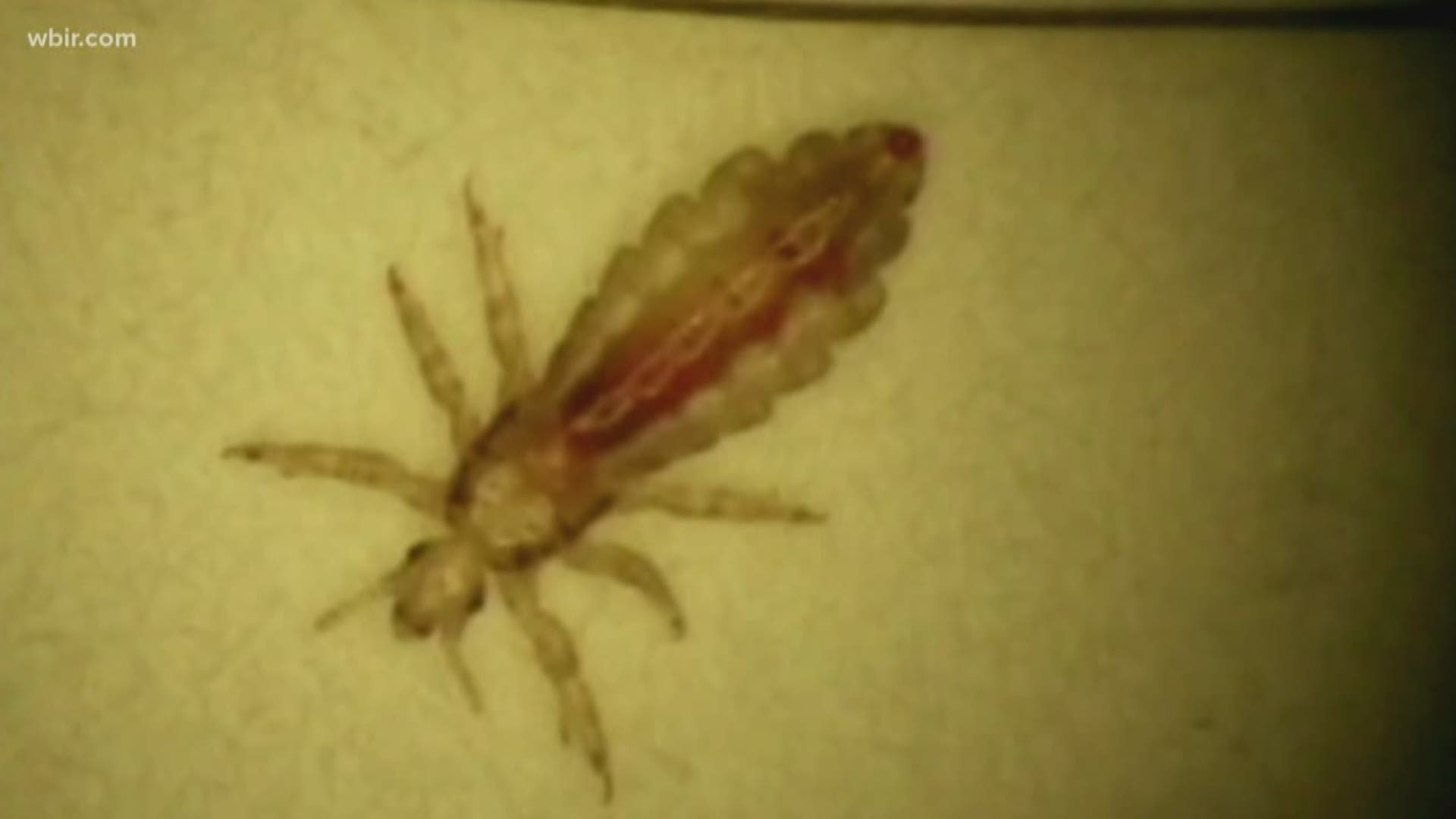KNOXVILLE, Tenn. — While the change in season brings cooler weather, it can also mean a spike in lice.
"We do see more cases in the fall," Knoxville Lice Clinic president Jennifer Fribourg said.
But she also stresses there is a method to the madness.
"We will see more cases because you are mixing with a new population," she said.
By this she means any setting that is filtering out different populations of people.
"Whenever anyone is changing populations, changing classrooms, going from school to camp," Fribourg said.
Since opening in 2017, her clinic has treated nearly 2,000 people and the process can get a little high tech. To confirm someone has lice, specialists take a sample and put it under a microscope. They then use a machine, which looks kind of like a blow dryer.
"We use an FDA cleared medical grade device to dehydrate the lice in their head," she said.
In the next step, specialists use the terminator comb.
"To get rid of the dead debris," Fribourg explained.
The last thing they do is use a gel on the patient's head.
"We follow it up with something called Dimethicone," she said.
For this reason, Fribourg believes being informed is really, really important.
"Most of the time, you don't know you have lice for the first 6 to 8 weeks," she said.
If you don't have any symptoms, it can take something else to get your attention.
"Only about 50 percent of people with lice will ever itch," Fribourg said.
Since head lice are so common among children, Fribourg and her clinic pass out free kits to schools every year. It is a gesture she believes goes a long way.
"Watching a kid who has lice, they are closed in, they have shut down... we want to watch them bloom, and you can literally see it happen," she said.
The CDC recommends the following to prevent the spread of head lice:
- Avoid head-to-head (hair-to-hair) contact during play and other activities at home, school, and elsewhere (sports activities, playground, slumber parties, camp).
- Do not share clothing such as hats, scarves, coats, sports uniforms, hair ribbons, or barrettes.
- Do not share combs, brushes, or towels. Disinfest combs and brushes used by an infested person by soaking them in hot water (at least 130°F) for 5–10 minutes.
- Do not lie on beds, couches, pillows, carpets, or stuffed animals that have recently been in contact with an infested person.
- Machine wash and dry clothing, bed linens, and other items that an infested person wore or used during the two days before treatment using the hot water (130°F) laundry cycle and the high heat drying cycle. Clothing and items that are not washable can be dry-cleaned OR sealed in a plastic bag and stored for 2 weeks.
- Vacuum the floor and furniture, particularly where the infested person sat or lay. However, spending much time and money on housecleaning activities is not necessary to avoid reinfestation by lice or nits that may have fallen off the head or crawled onto furniture or clothing.
- Do not use fumigant sprays or fogs; they are not necessary to control head lice and can be toxic if inhaled or absorbed through the skin.

